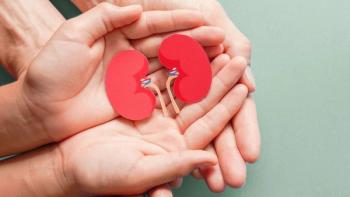
What Patients With Polycythemia Vera Should Know After ASCO 2025
Key Takeaways
- Rusfertide may eliminate therapeutic phlebotomies in polycythemia vera, showing symptomatic improvement and potential treatment utility.
- Besremi outperformed anagrelide in essential thrombocythemia, reducing thrombosis risk and driver mutation burden.
Patients with blood cancers like polycythemia vera, a kind of myeloproliferative neoplasm, may benefit in learning more about recent data from ASCO 2025.
Patients with hematologic malignancies like polycythemia vera, a kind of myeloproliferative neoplasm, may benefit in learning more about recent data which was shared at the
Following the meeting, expert oncologists, Dr. Joshua J. Sabari and Dr. Raajit K. Rampal, sat down for an interview with CURE to walk through these updates in data, breaking down what patients should take away from the meeting.
Rampal is the director of the Center for Hematologic Malignancies, as well as the director of the Myeloproliferative Neoplasms Program at Memorial Sloan Kettering Cancer Center, located in New York. Sabari is the editor in chief of CURE. He also serves as an assistant professor in the Department of Medicine at NYU Grossman School of Medicine and director of High Reliability Organization Initiatives at Perlmutter Cancer Center, also located in New York.
Sabari: Hi, I'm Dr. Josh Sabari, a thoracic medical oncologist at NYU Langone Health's Perlmutter Cancer Center in New York, and I'm also the editor-in-chief of CURE. I want to introduce my colleague, Dr. Raajit Rampal. Raajit, please introduce yourself.
Rampal: Hi. I'm Raajit Rampal at Memorial Sloan Kettering Cancer Center. I lead our program in myeloproliferative neoplasms.
Sabari: Raajit, thanks for joining us. I know ASCO is historically not a hematologic malignancy conference — we have ASH for that. However, what were the big takeaways from the ASCO meeting in the realm of leukemia this year?
Rampal: Yes, a couple of key things to highlight. As you just said, it's important to point out that we actually had a hematologic malignancy presentation as part of the plenary session.
A couple of other key highlights: one presentation, keeping with the theme of myeloproliferative neoplasms, was on a drug called Besremi (ropeginterferon alfa-2b-njft), which is FDA-approved for polycythemia vera. It was tested in essential thrombocythemia versus the only other approved drug we have in essential thrombocythemia, Agrylin (anagrelide), which was approved in the 1990s. That data showed that, as compared to anagrelide, Besremi was able to improve outcomes for patients by reducing the risk of thrombosis (the main concern with that disease) and also by improving patient symptom profiles. Finally, it showed a molecular effect, meaning we saw a reduction in the driver mutation burden in patients with essential thrombocythemia. So, some interesting things; we'll see if that drug also gets approval based on this phase 3 data.
There was also an interesting presentation on blastic plasmacytoid dendritic cell neoplasm, a very rare leukemia for which we have an approved drug called tagraxofusp, which targets CD123. A new drug called pivekimab sunirine, which also targets CD123, was presented. The data showed that pivekimab sunirine was able to induce remissions in a high proportion of patients. The only way to cure blastic plasmacytoid dendritic cell neoplasm is with a stem cell transplant, and this drug was able to bridge patients to stem cell transplant. That is perhaps the very important thing that was observed, both in untreated and previously treated patients. I think the final point there is that with our current anti-CD123 drug, tagraxofusp, we do see capillary leak syndrome, which can be a high-grade event, and that was not observed with pivekimab sunirine. So that may offer a different opportunity for treatment.
I think the last thing I'll point out was a presentation on chronic myeloid leukemia, which is clearly one of our great successes in oncology. Now we have an abundance of riches, which allows us to better select drugs for patients, taking into account their goals and their comorbidities. The newest kid on the block is Scemblix (asciminib), which is FDA-approved for frontline therapy or after failing two different TKIs. The drug was compared in a phase 3b study versus nilotinib, which is also an FDA-approved drug for chronic myeloid leukemia. The endpoint here was actually the proportion of patients who withdrew from treatment due to adverse events. What was found was that patients were more likely to stay on asciminib.
The importance of this finding is that with more powerful drugs, we know we can get patients into remissions quicker with chronic myeloid leukemia, which means they can usually go on to a trial of treatment-free remission, where we stop the drug and see if the disease comes back. However, the problem has been that many of the second-generation TKIs we use in chronic myeloid leukemia have more toxicities. This is a case where we don't see more toxicities with a different and more potent drug. So, I think to me, those are some of the major takeaways from ASCO, which had a fair number of hematologic malignancies abstracts this year.
Sabari: Yeah, quite impressive. You know, it's interesting that hematologic malignancies are truly an amalgamation of many diseases. Thank you for summarizing that so eloquently. And I appreciate you being here. Thank you for all the work that you do with CURE and for our readers. Dr. Rampal, thank you for joining us.
Rampal: Thank you so much for the opportunity.
For more news on cancer updates, research and education, don’t forget to





